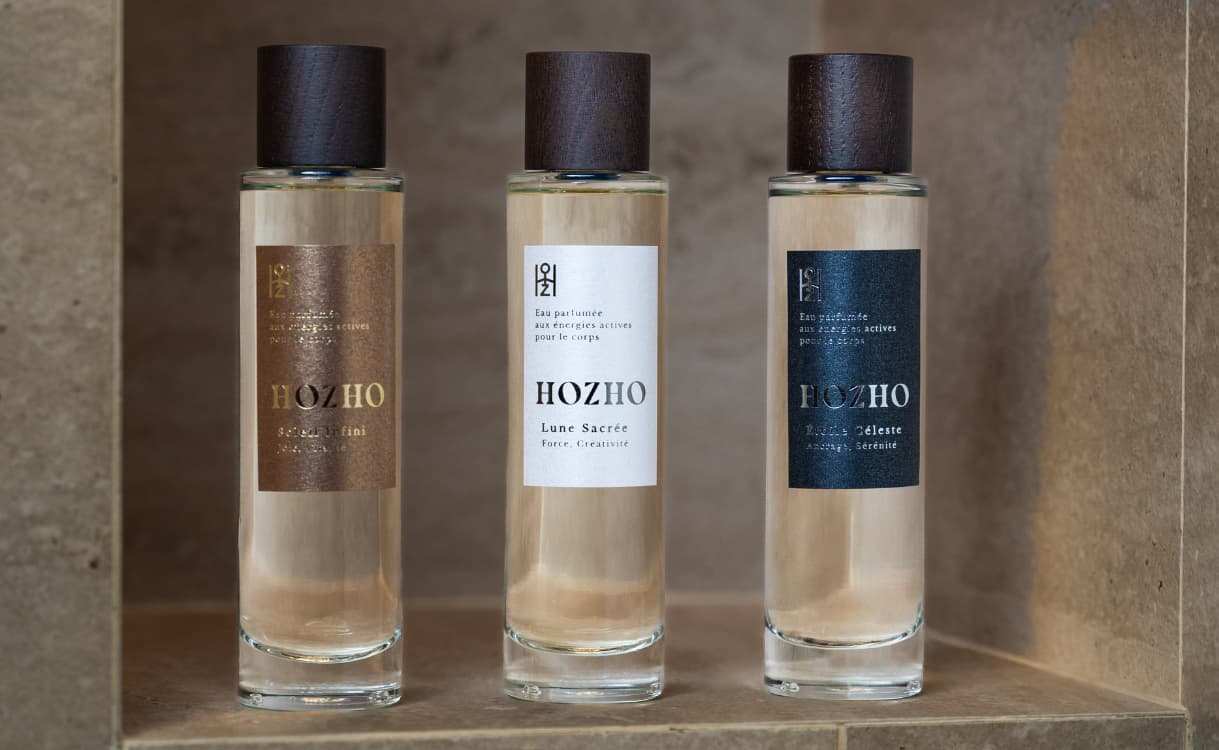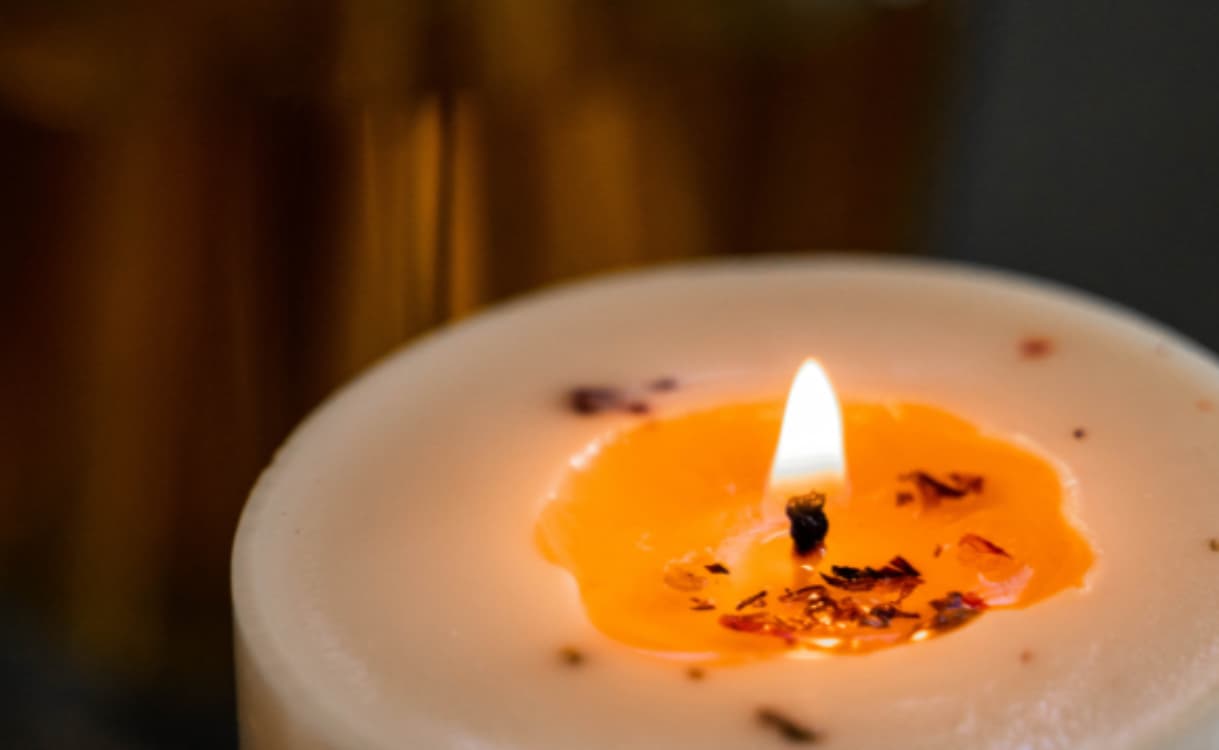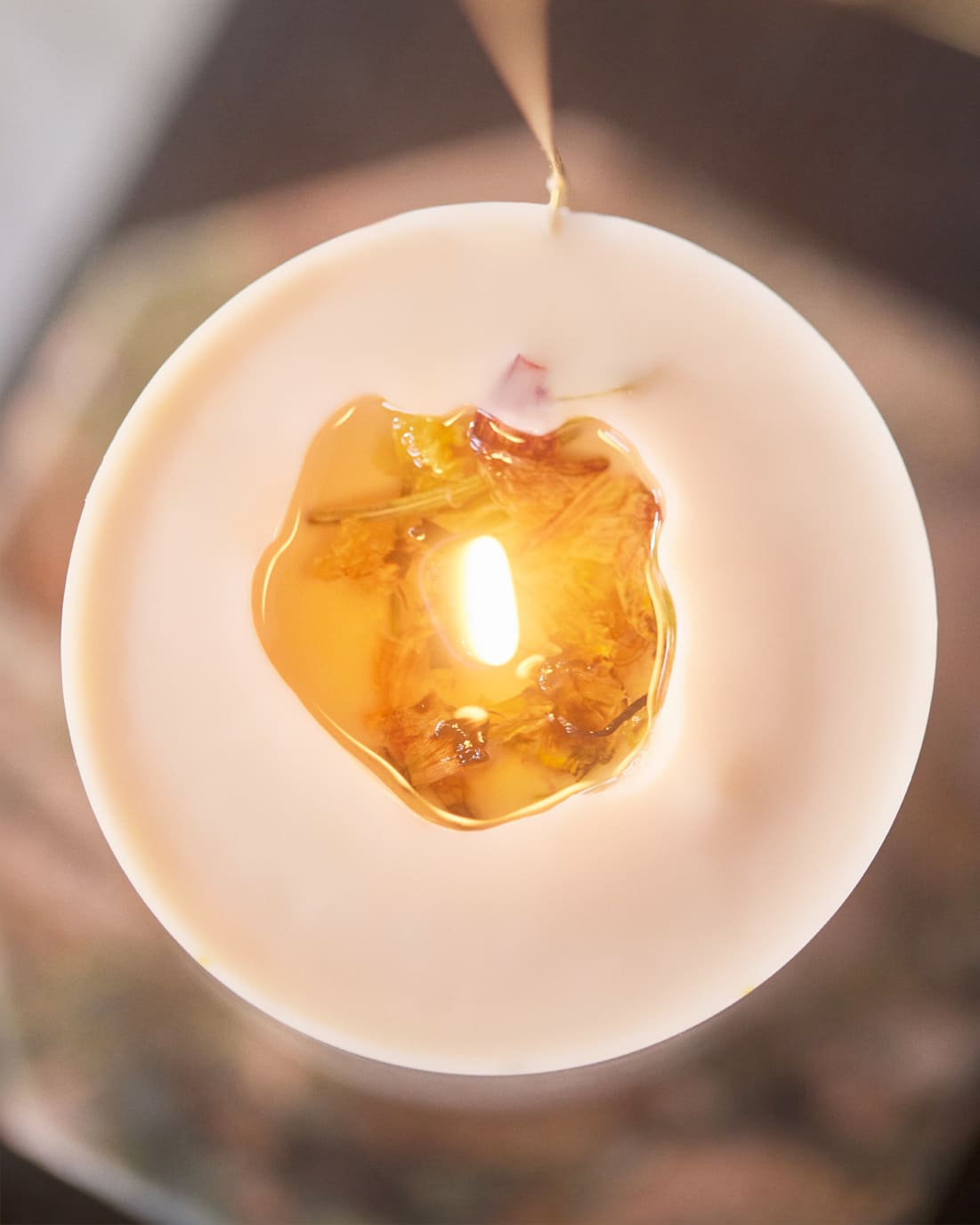Shamanic care: practices and benefits

Shamanic healing immerses us in the heart of energy healing and spiritual medicine . Inherited from ancestral traditions and indigenous spirituality , this holistic practice aims to balance the body and mind by acting on vibrational frequencies and the soul.
In this article, we will explore the history, benefits, and rituals of healing shamanism. You will understand what a shamanic ritual is, how a shamanic consultation takes place, and how HOZHO scented treatments are inspired by it to stimulate your life force.
What is shamanic healing?
It is a form of energy healing practiced by an energy practitioner, sometimes called a shaman or spiritual healer depending on the culture and approach. It works on the energetic and spiritual planes to relieve physical, psychological, or emotional ailments.
In shamanism , a disorder is most often perceived as a symptom of an energetic dysfunction or a spiritual conflict . The role of the shamanic practitioner is to act as an intermediary between the visible world and the spirits of nature, in order to restore harmony in the patient.
These holistic treatments take into account the subject in its entirety (body, heart, mind) and are suitable for those seeking inner well-being or to overcome blockages.
In the shamanic tradition, it is believed that there is a universal energy that connects all living beings. The role of the traditional shaman is to channel this force to provide healing for the soul and body.
Shamanic care can help purify a person's energies and free them from old traumas (sometimes perceived as burdens linked to karma ). It also soothes the mind , helps to reconnect with oneself , with one's life path ( inner journey ) and with one's spiritual guides:
- Energy cleansing: This involves cleansing a person's energy field (or aura) to remove negative or stagnant influences.
- Karmic release: Refers to the belief that some suffering stems from unresolved experiences (from this life or past lives).
- Inner journey: expression used in shamanism to designate the exploration of one's inner world, often guided by altered states of consciousness.
- Guides: benevolent spiritual entities (allied spirits, ancestors, totem animals) believed to accompany the person.
Many followers testify to the benefits of these sessions, evoking a renewed vitality, clarity of mind and a feeling of lasting energetic harmonization . It is an ancestral spiritual medicine where one consults the shaman a little like one would consult a soul therapist. One does not necessarily come to cure a physical illness, but to find serenity , positive energy, or to receive messages and advice from one's allied spirits (ancestors, totem animals, guides).
In short, shamanic care offers a different approach to healing, based on energy and the sacred, as a complement to classical medicine.
What is the shamanic tradition based on?
Shamanism is a tradition that dates back thousands of years and is found in various forms throughout the world (North Asia, America, Oceania, ancient Europe, etc.). It is based on a few universal principles.
First, the belief that beyond the material world exists a spiritual world populated by nature spirits , ancestors, and benevolent or malevolent entities. The shaman, a term of Siberian origin, is the intermediary between these two worlds. He interacts with the spirit world by inducing altered states of consciousness (shamanic trance) through specific rituals.
These shamanic trances allow the shaman to travel into the invisible, to seek the cause of a problem or elements of healing, then to return to restore balance to the person or community.
Historically, the traditional shaman occupies a central place in his tribe: at once healer , advisor, and spiritual mentor , he ensures the link between humans and nature.
Indigenous spirituality linked to shamanism is based on animism , that is to say the idea that each natural element (plant, animal, stone) possesses a spirit or energy.
Shamanic rituals therefore call upon a connection to nature and the elements. Ceremonies often include all four elements: sacred fire (ritual hearth) around which one dances or meditates, water (a bowl of sacred water to bless or absorb energies), earth (medicinal plants, ashes, sacred sand), and air (the smoke of sacred herbs or the shaman's breath).
Several sacred objects are used to focus energy and open access to the spiritual. The main one is the shamanic drum , whose rhythmic beat is compared to the heartbeat of the Earth. The drum serves to purify and harmonize the ritual space while helping the shaman enter a trance.
Each drumbeat acts as a vibrational wave that passes through participants, facilitating deep meditation and the opening of consciousness. This repetitive sound guides participants toward unsuspected spiritual realities by creating a bridge between the visible and invisible worlds.
In addition to the drum, there is often a rattle (shamanic maracas), sacred chants, and wind instruments or singing bowls to raise the vibrational rate of the ritual.
Sacred plants also play an important role. In many Native American cultures, the smudging ceremony is practiced by burning white sage or palo santo (sacred wood) to energetically cleanse places and people .
White sage (Salvia apiana), traditionally used by Native American peoples, is known for its purifying, protective and healing properties. Its balsamic scent when burned accompanies moments of prayer, shamanic ceremony and important life events (births, weddings, healings).
Combined with palo santo, an aromatic wood from South America, sage helps to harmonize space by neutralizing negative influences, blessing and purifying the atmosphere.
Other plants or resins can be used according to traditions:
- cedar and sweetgrass in North America;
- frankincense (olibanum) and myrrh in parts of Asia and the Orient;
- visionary shamanic plants like ayahuasca or peyote in Mexican ceremonies (although these are framed and do not correspond to the common shamanic healing we are talking about here).
Since the second half of the 20th century, there has been a revival of shamanism in the West. A growing interest in these ancestral practices has given rise to a neo-shamanism , with modernized approaches accessible to the general public.
Nowadays, it is possible to learn this knowledge during shamanic courses , shamanism workshops or through a shamanic initiation guided by an experienced practitioner.
These trainings allow you to discover basic shamanic techniques (drum journey, meeting your totem animal, etc.) and to explore your own soul's call . It is a spiritual impulse that pushes you towards healing and self-knowledge.
How does a shamanic treatment take place?
Each shaman or shamanic practitioner has their own method, but there are common steps in the course of shamanic treatment.
The session begins with a conversation in which the practitioner and patient define a specific healing intention. This intention might be, for example, "to free oneself from a deep fear," "to open oneself to self-love," or "to overcome an emotional blockage." Formulating the intention helps guide the energy of the ritual in the right direction.
Next comes the preparation and purification phase. The shaman creates a sacred space by possibly setting up an altar (with symbolic objects such as crystals, photos of ancestors, bowls of herbs) and performing a purification ritual .
When the frame is set, the shaman enters the central part of the treatment. Using his shamanic drum or rattles , he begins a guided shamanic meditation , gradually plunging into a state of light trance .
The repetitive rhythm of the drum and ancient chants (mantras, icaros, etc., according to tradition) guide the subject on an inner journey . He may feel sensations, see inner images or symbols, or simply achieve deep meditative relaxation.
During this time, the shaman "works" in the invisible world: he may be led to extract disturbing energies and dissolve them symbolically.
In the shamanic vision, certain sufferings are due to accumulated negative energies that must be removed: this is the extraction treatment . The shaman locates these energies (for example, sadness lodged near the heart, anger anchored in the stomach) and, through breathing, gesture or with a crystal, removes them from the subject's energy field. This energetic cleansing allows us to free ourselves from what does not belong to us or no longer belongs to us (blocked emotions, external influences, harmful patterns).
Once the extraction is done, it is a matter of filling the void with something positive: this is often the moment of soul recovery . According to shamanic teachings, fragments of our energy or our soul can have detached following shocks (bereavement, accident, major trauma) and lack our integrity.
The shaman then sets out to find these missing fragments and bring them back to the person. He symbolically "recovers" these parts of the soul (for example, in the form of a power animal or a light that he brings back) and reintegrates them into the patient's aura.
This is called making the person "whole again." This soul retrieval is accompanied by a profound emotional relief for the recipient, who may experience peace, a renewed sense of grounding, and a reconnection with themselves. After this, any replacement energies that may have taken root (addictive behaviors, repressed anger, etc.) no longer exist.
Alongside these two main techniques (extraction and recovery), shamanic healing can include other aspects depending on the needs. The shaman can perform spiritual clearance work if he perceives unwanted presences around the person, or psychopomp work to accompany a deceased person (or the soul of an attached ancestor) towards the light.
He can also call upon protective forces to surround the patient. In some traditions, the shaman may use a shamanic oracle (card drawing, runes, shells) to deliver a message or advice from the guides.
The session generally ends with a return to calm and a discussion. The practitioner helps the person "come back," sometimes by offering them a glass of water (to ground themselves and anchor the energy).
They discuss the feelings, visions or messages received, in order to give meaning to the experience. It is a moment of energetic support : the shaman delivers his recommendations (rituals to do at home, changes in habits, spiritual anchoring exercises such as walking in nature, keeping a dream journal, etc.).
Healing opens doors, but it's up to each individual to continue working on themselves daily. In this sense, shamanism empowers individuals on their path to healing and supports them with kindness.
It's worth noting that today, there are several ways to enjoy the benefits of shamanism, depending on your preferences and sensitivities. Some opt for a private shamanic consultation , while others participate in group healing circles . Shamanism workshops or shamanic retreats allow you to share a spiritual experience within a community.
Finally, it's entirely possible to draw inspiration from shamanism to practice small wellness rituals at home. Using objects imbued with positive intentions, such as energy-charged stones or HOZHO energetic perfumes , can constitute a daily wellness ritual borrowed from shamanism.
HOZHO, creator of energetic scented care for the home, body and soul
Inspired by the ancient wisdom of shamanism, the French brand HOZHO offers scented treatments with active energies that bring balance and serenity to our modern lives. The name Hozho itself, borrowed from the Navajo language, evokes " supreme harmony ," that is, the state of benevolent equilibrium between man, nature, and the spiritual.
This quest for deep harmony, at the heart of Native American shamanism , is the very soul of the HOZHO philosophy. Our brand draws on ancestral traditions to create products that combine energetic benefits and sensory pleasure.
HOZHO's energetic fragrances incorporate plants with unique vibrational properties : energetic plants selected for their purifying, balancing, and protective properties . Our ranges of energetic fragrances meet different needs:
-
Purifying Range : it aims to purify the energies of a place and its occupants, by evacuating negative waves. HOZHO has combined white sage , palo santo and bamboo. Available in candles (Les Flammes), energy sprays (Les Pluies) and diffusers (Les Breses), this purifying range creates a healthy atmosphere reminiscent of the fumigations of shamanic ceremonies.
-
Harmonizing Range : inspired by energy harmonization rituals, it aims to restore balance and inner peace. HOZHO uses plants with soothing and balancing properties; for example, notes of sandalwood or patchouli are found, known to promote anchoring and spiritual elevation. These compositions create a serene atmosphere conducive to meditation and body-mind alignment.
-
Protective Range : This line is designed to shield against harmful energies and strengthen our sense of security and confidence. Like the amulets and energy shields used by shamans, HOZHO protective candles and fragrances incorporate highly protective ingredients such as myrrh and cedar. Their scent creates a symbolic olfactory barrier around your space, helping to dissipate ambient stress and instill a sense of refuge.
-
Vitalizing Range : Connected to the energy of the Sun and vitality rituals, this range provides a positive boost to rediscover joy and vitality in everyday life. HOZHO's vitalizing creations rely on energizing essences (sunny citrus fruits, stimulating spices, invigorating resins) to raise the vibrational rate and banish fatigue. Lighting an energy candle or spraying a vitalizing spray feels like an inner sunbath that invigorates the soul.
-
Native American Sacred Lands Collection : This is an edition inspired by Native American rituals that offers a true sensory journey and cleanses the memory of walls . This home fragrance evokes the scents of distant ceremonies, with notes of leather, cedar, amber and honey, for a mystical and warm atmosphere.
- Body Perfumes (Waters) : HOZHO also offers energetic Perfumed Waters for the body. These vibrant perfumes, to be worn like a classic fragrance, are enriched with plants known for their balancing and protective properties. Their names are evocative: Infinite Sun (joy and vitality), Sacred Moon (strength and creativity), Celestial Star (grounding and serenity).
By combining the spiritual heritage of shamanism with modern requirements, HOZHO allows everyone to integrate a little of the magic of shamanic rituals into their daily lives.
Our creations act as vibrational treatments in their own right: they purify ,










